
Is it safe to use an abrasive wheel on a cold saw?
Worried about using an abrasive wheel on your cold saw? An incompatible wheel can shatter, posing a huge risk. We will show you the correct and safe way.
Yes, it can be safe, but only if you use an abrasive wheel specifically designed for a cold saw’s lower speed. The key is matching the wheel’s RPM rating to the saw’s speed. Never use a standard high-speed abrasive wheel on a low-speed cold saw.

Understanding this basic rule is crucial, but true safety is in the details. It comes from knowing not just what to do, but how and why to do it. You need to look beyond the wheel itself and consider the entire process, from setup to the finished cut. Let’s explore the essential safety measures you need to implement to ensure every cut is a safe one.
What are the safety precautions for a cold saw?
A cold saw is a powerful tool with real dangers. One mistake can cause costly damage or serious injury. We will outline the essential precautions for safe operation.
Always wear proper Personal Protective Equipment (PPE), especially safety glasses. Ensure the workpiece is securely clamped before starting the cut. Keep your hands clear of the blade’s path and never remove cut-offs while the blade is spinning. Regularly inspect the machine for any issues.

Going deeper into cold saw1 safety involves more than just wearing goggles. It’s about creating a safe system around the machine. At our factory, we’ve developed a safety checklist over our nearly 30 years that every operator follows. It covers three main areas: the operator, the machine, and the environment. This systematic approach minimizes risks and maximizes efficiency. A well-maintained machine operated by a trained user in a clean workspace is the foundation of a safe workshop. Let’s break down these critical safety checks.
Key Safety Areas for Cold Saw Operation
| Category | Key Precaution | Why It’s Important |
|---|---|---|
| Operator | Wear approved PPE (goggles, face shield, gloves). | Protects from hot flying chips, sharp edges, and coolant splash. |
| Machine | Securely clamp the material before every cut. | Prevents the workpiece from moving, vibrating, or being ejected. |
| Environment | Keep the area clean and free of clutter and spills. | Reduces trip hazards and allows for safe movement around the machine. |
After every shift, our team performs a quick check-up. We make sure the blade is sharp and the coolant system2 is working properly. This simple habit prevents many potential problems and ensures the machine is ready for the next day.
What are the safe use of abrasive wheel tools?
Abrasive wheels are powerful but dangerous if used incorrectly. A wheel failure at high speed is a serious hazard. We’ll cover the fundamental rules for using them safely.
Before use, always inspect the wheel for cracks or damage by performing a "ring test." Ensure the wheel’s speed rating (RPM) is higher than the tool’s RPM. Use the correct flanges and tighten them properly, and always use the machine’s safety guard.

Safe handling of abrasive wheels is a non-negotiable part of our daily work here in Henan. For us, safety isn’t just a list of rules; it’s a culture. Every new employee learns about the "ring test3" on their first day. You gently tap the wheel with a light, non-metallic object. A good wheel gives a clear, ringing sound; a damaged one sounds dull. This simple test has prevented countless potential accidents. But inspection is just the first step. The entire system, from mounting to operation, must be handled with care. The golden rule is simple: never exceed the wheel’s maximum RPM. This is the most common cause of wheel failure.
Core Principles for Abrasive Wheel Safety
- Inspection Before Mounting: Always perform the ring test. Visually check for chips, cracks, or other damage. Never use a wheel that has been dropped or gotten wet.
- Correct Mounting: Use the correctly sized and clean flanges4 provided with the machine. Do not over-tighten the nut, as this can stress the wheel. Make sure a paper blotter is between the flange and the wheel.
- Operation and Guarding: Always use the safety guard that came with the tool. Let the wheel run at operating speed for a full minute before starting to cut, and stand to the side during this time.
What materials can you use on the cold saw?
Unsure what materials a cold saw can cut? Cutting the wrong material dulls the blade, ruins the workpiece, and can be unsafe. We’ll clarify its ideal applications.
Cold saws are primarily designed for cutting metals. They excel at producing clean, precise, burr-free cuts in ferrous materials like steel and stainless steel, and non-ferrous metals like aluminum and copper. They are not suitable for wood, plastic, or masonry.

A cold saw is a specialist tool, not a general-purpose cutter. Its strength lies in precision metal cutting. The "cold" in its name comes from the process itself; the blade turns slowly, and coolant absorbs the heat, transferring it to the chips. This leaves the workpiece cool. This method is perfect for metals because it prevents material hardening and distortion, which is common with high-speed abrasive cutting. As a factory in the heart of China’s abrasive industry, we handle a massive amount of raw metal. Our cold saws are essential for preparing this stock with precision for our production lines.
Common Materials for Cold Saws
| Material Type | Examples | Notes |
|---|---|---|
| Ferrous Metals | Carbon Steel, Alloy Steel, Stainless Steel | This is the primary application. The slow speed and coolant provide an excellent, smooth finish. |
| Non-Ferrous Metals | Aluminum, Copper, Brass | A different blade tooth geometry may be needed, but the cut quality is superb. |
| NOT Recommended | Wood, Plastic, Concrete, Composites | The blade design and low speed are ineffective and dangerous for these materials. |
What type of blade does a cold saw use?
Confused about which blade to use in your cold saw? The wrong choice results in bad cuts and a short blade lifespan, which costs you money. Let’s explain.
Cold saws use circular, toothed saw blades, typically made from High-Speed Steel (HSS) or with carbide-tipped teeth. Unlike abrasive wheels, these blades cut material with sharp teeth, similar to a wood saw but much stronger and slower. The choice depends on the material.

The heart of any cold saw is its blade. It’s what separates this machine from an abrasive chop saw. A cold saw blade doesn’t grind away material; it shears it off with distinct teeth. This is why the cuts are so clean and precise. For most of our general steel cutting, we rely on solid High-Speed Steel (HSS)5 blades. They are durable, can be resharpened many times, and offer a great balance of performance and cost. However, when we are cutting harder materials like stainless steel or need to run production at higher speeds, we switch to carbide-tipped blades. The carbide tips are extremely hard and maintain their sharpness for much longer.
HSS vs. Carbide-Tipped Cold Saw Blades
| Blade Type | Best For | Advantages | Disadvantages |
|---|---|---|---|
| HSS (High-Speed Steel) | Mild steel, aluminum, general use | Lower cost, can be resharpened | Wears faster on hard materials, slower speeds |
| Carbide-Tipped | Stainless steel, hardened alloys, high-volume production | Longer life, faster cuts, excellent finish | Higher initial cost, more brittle (can chip) |
The number of teeth is also critical. A good rule is to use fewer teeth for thick, solid materials and more teeth for thin-walled tubes.
Conclusion
Using an abrasive wheel on a cold saw is unsafe unless it is a special wheel designed for it. Always prioritize matching the tool’s RPM, using the correct blade, and following safety protocols.
-
Learn about cold saws to ensure proper usage and maximize safety in your workshop. ↩
-
Coolant systems are vital for maintaining tool performance; explore their function. ↩
-
The ring test is a simple yet effective way to ensure wheel safety; learn how to perform it. ↩
-
Understanding flanges is key to safe wheel mounting; explore their role. ↩
-
HSS is a common blade material; discover its advantages and applications. ↩
Written by
leeon
You may also be interested in:
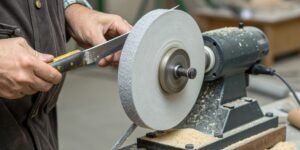
How to use a hard felt bench grinding wheel on knives?
Getting a razor-sharp, polished edge on a knife can be frustrating and slow. A dull knife is dangerous, and using the wrong tool can easily
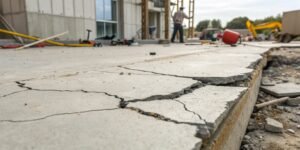
What are grinding cracks and how do you stop them?
Are tiny cracks appearing on your ground surfaces? This problem leads to part failure, wasting time and money. You can solve it by understanding the
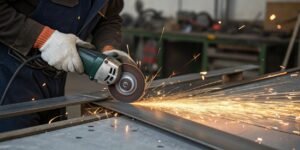
What does an angle grinder do that other tools can't?
Struggling with tools for multiple tasks? Carrying a heavy toolbox is inefficient. An angle grinder replaces many tools, saving you time and effort on the
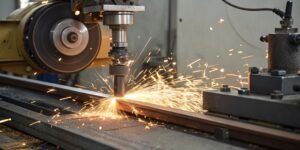
How to reduce the cycle time in a grinding machine?
Is your grinding process a major bottleneck? Slow cycle times hurt your bottom line and delay deliveries. You can speed up production by optimizing key

Do you regularly sharpen your chisels? If so, how?
A dull chisel ruins wood and causes frustration. This wastes time and expensive materials. Learning to sharpen correctly is the simple, game-changing solution you need
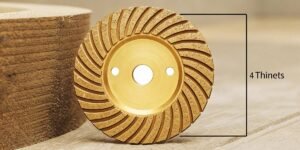
How is a grinding wheel specified?
Confused by the codes on a grinding wheel? Making the wrong choice costs money and ruins parts. Let me show you how to read them
